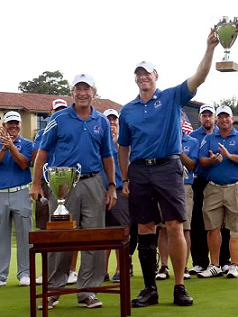Consumer Involvement




I've had a long and rocky road with my injury, which was caused by a landmine blast in Kandahar Province, Afghanistan, on October 16, 2010. At first it seemed like I was truly lucky because I was the first landmine injury that did not result in some version of traumatic amputation on site. The five fasciotomies were a little different than the standard. You read correctly; five fasciotomies. These included the usual two in the tibialis anterior and soleus, but the three in my foot, which included one on the instep and two on the top of my foot, were uncommon. The instep fasciotomy required a skin graft from my thigh, and the resultant adhesions are still painfully sticking around.
With the advent of the Intrepid Dynamic Exoskeletal Orthosis (IDEO) only months before my injury, the doctors and physical therapists were confident that I'd be able to run again with the new ankle-foot orthotic (AFO). Given that information, I chose to salvage my leg rather than amputate and hoped for the best. However, due to the nature of my injury and a foot that wasn't really anatomically correct anymore, this wasn't really the case. I can run for short distances, but anything longer than a few hundred yards is going to hurt a lot during and even more so later that day. Interestingly, I am able to put up 1,000 pounds on the leg press at the gym, which I do to taunt some of my buddies and gym mates, but I'm still about 600 pounds shy of what I used to be able to do.
Some of the new issues I faced with the AFO include fitting into shoes and pants due to the added volume of the carbon fiber of the IDEO that wraps around my toes, my heel, and my ankle and extends up to the bottom of my knee. Going through airport security is always a chore, but I'm used to the pat down and elbow gloves at this point.
Hindsight always being 20/20, it may have been better if I chose to amputate. I flew back from Colorado to Walter Reed a few years ago to talk about amputation, but couldn't bring myself to make the decision to do it. Once it's done, it's done. Unfortunately, you can't say, "I've changed my mind!" after an amputation. Being a part of the Peer Reviewed Orthopaedic Research Program (PRORP) panel gives me a lot of hope for continued improvement for limb salvage patients in the future.
I also have pretty extensive peripheral nerve damage. I don't need pain medication for day-to-day activities, but a hard workout is going to hurt during and after. The lack of pain allows me to do a lot, but it also can lead to more injuries. In 2012, I was running in a 5k in Colorado Springs trying to prove I could stay in the military. During the run, I noticed I wasn't getting as much spring return from the IDEO, but in my head I said, "Oh well, keep running." The IDEO had broken on both sides of my ankle, and I had reshattered my calcaneous (ankle bone) down to chicklets. That's another setback and another Taylor spatial frame (external fixator).
My injury is a papercut in comparison to most blast injuries. I have met a lot of impressive men and women that have worked very, very hard to overcome far greater challenges than my own. I've come to terms with the fact that I'm always going to get a lot of sideways glances and a lot of really bad guesses as to what the IDEO is actually for. I walk very well with it on, and the vascular issues that I have are helped with a compression sock; however, my tan lines are a little ridiculous. So other than bad tan lines and issues with shoes, I really can't complain.
I currently serve on the board of directors for the Salute Military Golf Association because I know how golf has positively impacted my life and how the fresh air, blue sky, and green grass can help a lot of Warfighters both physically and mentally. I also advocate for Tee It Up For the Troops, the Military Warriors Support Foundation, Patriot Point, and the Yellow Ribbon Fund.
The PRORP addresses novel and cutting edge approaches to blast and battlefield trauma injuries that can be improved to give our nation's wounded the best recovery possible, either allowing them to return to duty or, with more extensive injuries, allowing them to have a productive and active lifestyle. Colonel Hooper was the first to approach me while I was going through my rehab at the Center for the Intrepid in San Antonio. She asked me to consider serving on the PRORP panel, and I've always appreciated research and improving outcomes for our Warfighters, so it was a pretty easy match. I really enjoy my time as a PRORP Programmatic Panel member. It allows me to stay involved with cutting-edge research that will positively affect future wounded Warfighters, as well as have an impact on civilian trauma and orthopedic practices. The research funded through the PRORP positively affects both military and civilian orthopaedic treatment.
Currently, I am a consultant in the defense and IT industries, focused on improving communication, leadership development, focused data analytics, and process improvement. I like to play golf with my dad and brother, volunteer with good organizations like those I mentioned before, cook awesome food for friends and family, and spend time outside with good friends and a dog or two.
Last updated Wednesday, March 12, 2025














